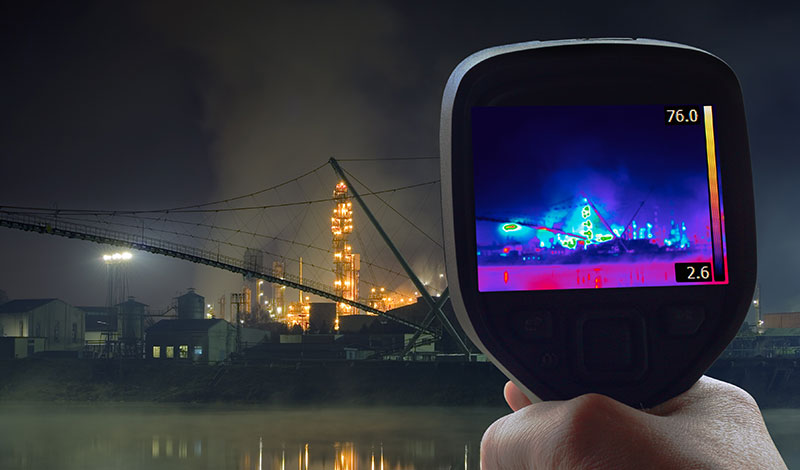
Posted on
Infrared optics, or IR optics, are growing in demand due to their ability to aid in navigation and surveillance in a few different markets. These optical devices differ from other optics because they deal with infrared light instead of visible light, which creates specific thin film requirements for their manufacturing.
What is Infrared Light?
To understand the requirements for IR optics and their applications, it’s important to note the distinction between infrared light and visible light. On the electromagnetic spectrum, infrared is just beyond visible light, meaning that humans can’t detect it with their eyes alone.
Wavelengths from infrared light are longer than visible light wavelengths, and infrared also has a lower frequency than visible light. Because the wavelengths are longer, there is often less scatter and absorption of infrared light. Through precision optics, light may be focused (for example, through a laser or LED) to meet application requirements, but infrared light still needs to be detected.
How IR Optics Are Used
IR optics are very often used in thermal imaging applications, where detectors are needed to identify and map the infrared energy emitted by objects. The warmer an object is, the more infrared light (and thermal energy) it will emit. IR cameras can detect this energy and then convert it into an electronic signal to produce a thermal image. The lens focuses the IR waves onto an IR sensor array.
Because IR detectors rely only on thermal energy for identifying and mapping out objects, they present a number of benefits to defense applications. They are commonly used in night vision gear, long-range imaging in missile guidance systems and remote target acquisition.
IR imaging systems do not need any visible light (such as a flash or background light) in order to capture images, providing a level of necessary covertness for defense applications. Lighting is often not ideal in the field for military or defense operations, which may take place in tough weather conditions or after nightfall. Optical imaging devices would be limited in those situations and provide low-quality results, whereas IR detectors can still create very detailed images regardless of the environment or lighting.
Market Drivers for IR Optics
The infrared detector market as a whole is expected to witness a CAGR of 9.4% through 2024; the IR camera market is expected to see similar growth, with a CAGR of 8.3% to reach $9.3 billion. The global military electro-optical/infrared systems market is expected to grow to $14.3 billion by 2028, with a CAGR of 2.98%.
Beyond the defense applications listed above, here are a few of the other drivers of demand for IR detectors and cameras:
Security and surveillance: Because IR cameras can operate without any visible light, they are also a suitable option for surveillance. With good image contrast, they can monitor large areas.
Commercial applications: In commercial use, IR detectors can be used to monitor an object’s temperature and ensure that temperature control is always maintained. This is especially useful in environments such as data warehouses, where the equipment produces a ton of heat as it operates.
Smart homes: It’s becoming more common for residential homes to become “smart”, where household appliances and systems are monitored and managed remotely. Thermal imaging and IR motion detection are often used for security and alarm systems in these homes.
Thin Film Considerations
Zinc sulfide, germanium and zinc selenide are a few of the most common materials used in thin film coatings to create focal plane array IR detectors. Because of the longer wavelengths, thicker layers are needed, leading to very long run times during thin film deposition. Improving deposition rate is not as much of a concern as improving precision and yield. For consistency throughout each run, reliability and stability are paramount.
IR imaging systems also often require indium bumps as electrical interconnects. The indium bump bonds the detector to the electronic submount for readout, ensuring greater durability for end use. The high-yield flip chip assembly is also an important feature for meeting higher-density pixel requirements.
To learn more about how indium bump deposition can be used in IR imaging for defense applications, download our infographic, 4 Considerations for Indium Bump Deposition for Flip-Chip Micro-Array Image Sensing.